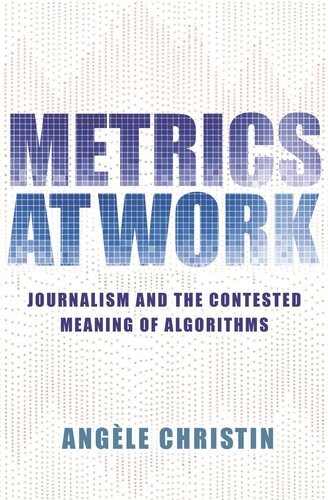

Most ebook files are in PDF format, so you can easily read them using various software such as Foxit Reader or directly on the Google Chrome browser.
Some ebook files are released by publishers in other formats such as .awz, .mobi, .epub, .fb2, etc. You may need to install specific software to read these formats on mobile/PC, such as Calibre.
Please read the tutorial at this link: https://ebookbell.com/faq
We offer FREE conversion to the popular formats you request; however, this may take some time. Therefore, right after payment, please email us, and we will try to provide the service as quickly as possible.
For some exceptional file formats or broken links (if any), please refrain from opening any disputes. Instead, email us first, and we will try to assist within a maximum of 6 hours.
EbookBell Team

4.1
70 reviewsThe starkly different ways that American and French online news companies respond to audience analytics and what this means for the future of news
When the news moved online, journalists suddenly learned what their audiences actually liked, through algorithmic technologies that scrutinize web traffic and activity. Has this advent of audience metrics changed journalists’ work practices and professional identities? In Metrics at Work, Angèle Christin documents the ways that journalists grapple with audience data in the form of clicks, and analyzes how new forms of clickbait journalism travel across national borders.
Drawing on four years of fieldwork in web newsrooms in the United States and France, including more than one hundred interviews with journalists, Christin reveals many similarities among the media groups examined—their editorial goals, technological tools, and even office furniture. Yet she uncovers crucial and paradoxical differences in how American and French journalists understand audience analytics and how these affect the news produced in each country. American journalists routinely disregard traffic numbers and primarily rely on the opinion of their peers to define journalistic quality. Meanwhile, French journalists fixate on internet traffic and view these numbers as a sign of their resonance in the public sphere. Christin offers cultural and historical explanations for these disparities, arguing that distinct journalistic traditions structure how journalists make sense of digital measurements in the two countries.
Contrary to the popular belief that analytics and algorithms are globally homogenizing forces, Metrics at Work shows that computational technologies can have surprisingly divergent ramifications for work and organizations worldwide.